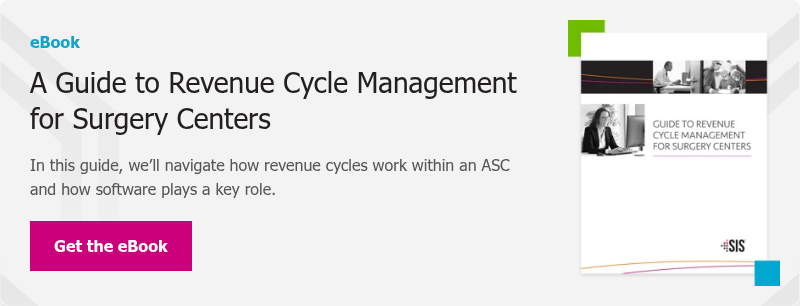Data. It's a small word for something that plays such a big part in monitoring the health of your revenue cycle. Today, we have the ability to capture and analyze an amazing amount of numbers and statistics at every step of the patient journey—from the time they schedule an appointment to when they are treated and billed.
But all data isn't equal. For it to be useful, you must ensure its accuracy, security and transparency. Here are a few tips:
Data Integrity
This refers to the accuracy and consistency of your information. Seems simple enough, but the biggest challenge with data integrity in the healthcare revenue cycle is timeliness. Typically, by the time data is captured and analyzed, it's at least 30 days old. And if you're running a business 30 days behind, you may soon find yourself out of business—in any industry.
Imagine this: data leads you to learn that a certain procedure (an implant, for example) is no longer being reimbursed the same way and each one now costs you thousands of dollars. If it takes you 30 days to find out, you may have done enough procedures of that kind to be tens of thousands of dollars in the hole.
This is a vital link between the financial and clinical aspects of the revenue cycle, and why you must utilize real-time data and analytics platforms—not a tool to study trends based on past performance.
Data Security
Patient health information (PHI) is incredibly sensitive—and valuable. From complex HIPAA guidelines to the rash of security breaches experienced by healthcare organizations, the technologies and processes you utilize must meet regulations to keep PHI secure.
That said, information security isn't easy, as effective revenue cycle management requires access to data by numerous entities. Fortunately, developing strong risk assessment procedures and enacting a check and balance system for them can help. Employing a robust, end-to-end security posture that covers both the technology as well as the human aspects of information security will ensure patient data is protected and guidelines are being followed to the letter of the law without unnecessarily blocking access to people that need it to do their job.
This starts by matching, managing and protecting the patient information with a multilayered identity verification solution that validates the user privileges along with their attributes and roles with the ability to use an audit tool to report on any credentials that have been compromised. It also includes security awareness training for anyone with access to potentially sensitive data.
Data Transparency
This refers to the accessibility of information for those who need it and are sanctioned to access it: patients, payers and providers. As value-based healthcare moves patients to become more involved with their care, accessible data has become a necessity. Ideally, patients should be able to access a secure provider site where all pertinent information about their medical history can be found: recent visits, procedures, lab results, who reviewed their records, and more.
Data access is also important to payers and providers, particularly under value-based models where collaboration and information-sharing is key to success. But even with technological advancements in data sharing, getting this all-important information to and from patients, payers, and providers is still often a piecemeal process. Greater data transparency across the care ecosystem means widespread interoperability is needed—systems that are able to see and share data between each other.
In an outpatient facility, you have two key resources: people and data. They're linked, as you can see above, with technology forming the bridge. The first step is to have a clear understanding of what you want to achieve. Knowing this end goal and finding the right solutions can ensure that you're putting the entire revenue cycle puzzle together with data that is accurate, secure and transparent to the right people at the right time.




























